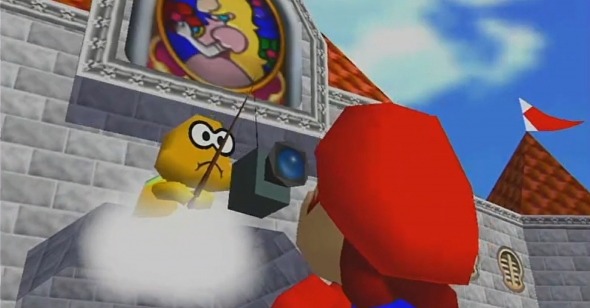This Week, We Capture Works That Say:
- Isn’t It Noir-onic?
- We Need a Heroine!
- Let’s Talk About Sex, Family
- Walk Without Riffing and You Won’t Attract “Worm”
- It’s-ah Me! Video!
Thanks to Miller for contributing this week (though he is blameless for this intro). Send articles throughout the week to ploughmanplods [at] gmail, post articles from the past week below for discussion, and Have a Happy Friday!
In Noirvember news, Alexander Mooney examines the cult crime classic Blast of Silence for Screen Slate:
Quite possibly the most uses of the word “hate” per minute in any motion picture, Blast of Silence numbs the viewer to this virulence through its unrelenting unification of style and subject. Its poster promises audiences the experience of walking “shoulder-to-shoulder” with a killer and the film delivers on this exploitation premise with the bitter irony of a monkey’s paw. Its dilapidated world is inextricable from the hollowing-out of its human focal point. Blast of Silence’s jagged jolts and rough-hewn emotions build toward appointments with death that carry the bathetic weight of an apocalypse in miniature; it ends with both a bang and a whimper.
At the BBC, Christina Nyland surveys female action stars through the years:
In the 1910s, “serial” films – episodic shorts not unlike television series shown at the cinema – were all the rage. Among the most famous of these were The Perils of Pauline (1914), starring Pearl White, dubbed the “peerless, fearless girl”, whose death-defying willingness to do her own stunts included high-speed chases, jumping from cliffsides, and generally proving she had just as much mettle as the men of their time. …White was joined in the ranks of so-called “serial queens” by several others who were similarly audacious, like Helen Gibson, whose 119-episode Hazards of Helen (1914-17) saw her trapped in real burning train cars and facing discrimination from the men around her in real proto-feminist fashion.
For The Cut, Anya Kamenetz writes about parents using mainstream sex scenes as counterprogramming to pervasive violent porn online:
Even series known for positive portrayals of sex don’t always get the details right — and can provide their own teachable moments. Puberty educator and mom of four Vanessa Kroll Bennett, co-author of the book This Is So Awkward, wants her kids not only to see depictions of nonviolent, loving sex, but also to fully grasp sexual pleasure. Watching alongside them is a way to make sure they understand what they’re seeing. She used Bridgerton as a teaching tool with her 13-year-old daughter, pausing the show during season one, episode six, when Daphne Bridgerton loses her virginity. “With a single thrust, she seemingly orgasms. I looked at my daughter and asked her, ‘What didn’t he find?’” recalls Bennett. The girl responded, “Her clitoris!,” which is how you know this was not their first conversation on the topic. […] That said, not everyone I interviewed suggested watching these scenes with your kids. Heather Corinna, founder of the sex-education site Scarleteen, tells me cis boys “generally don’t want to get a boner with their parents.” Corinna says making recommendations is preferable to hosting a family watch party.
And in a roundup of loud music at The Quietus, JR Moores praises the simple pleasure of Louse’s latest:
There are a few seconds of feedback at the beginning of Creep Call’s opening number, ‘Worm’, before the band are assaulting the ears at full pelt with their greasy repetitive riffs, unhinged distortion and fevered shouting. Their style has the dark colour and thickness of Marmite. Like the famous yeast extract, Louse are not for everyone but, as the old saying goes, if you go to your grave without enjoying Marmite then have you ever truly lived? …Louse have a vision and on Creep Call they accomplish it. To paraphrase Lou Reed, “One riff is fine. Two riffs is pushing it. Three riffs and you’re into jazz.”
And finally, Reverse Shot hosts a roundtable on video game cinematography – the technical challenges, the evolution of the camera’s role, and whether Lakitu is truly the visual author of Mario 64:
The idea of the player as a cinematographer becomes more apparent as we enter the 3D era. But there is an art to static framing in games as well, one that’s a bit lost since games don’t tend to have pre-rendered images as still backgrounds anymore. When you watch a Béla Tarr film, you don’t have control of the camera, but like with a lot of slow cinema, you are free to take in the whole frame at length, encouraged to search for details. There’s a similar dynamic at play with, for instance, classic point-and-click adventure and mystery games, where you have to search out the relevant aspects of a detailed environment. Cinematography isn’t just how the camera is placed and how it moves; there’s also what’s within the frame and how it moves.


